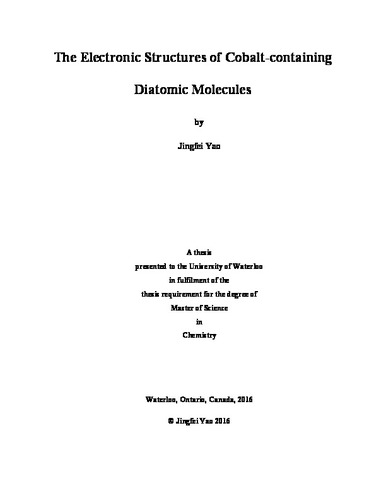| dc.description.abstract | Theoretical investigations of the electronic structures of several metal-containing diatomic species (i.e., Co2+, Co+•RG (RG=He, Ar, Kr), Au+Ar, and Ag+Ar) have been conducted. In this study, two categories of methods have been utilized for the calculations: single reference methods, including density functional theory (DFT, TD-DFT) and coupled cluster theory (CCSD, EOM- CCSD), and multireference methods, such as multireference configuration interaction (MRCI) and multireference equation-of-motion coupled cluster theory (MREOM-CCSD).
Preliminary results for the potential energy curves (PBEs) of Co2+ as calculated with DFT and EOM-CCSD yields two anomalous results: discontinuous PECs and negative excitation energies. These two results indicate that single reference methods are not adequate for description of the Co2+ system, and that multireference methods should be employed. MRCI calculations which employed the Davidson correction remedied the negative excitation energies issue, but the PECs remained discontinuous at this level of theory. The MREOM-CCSD method produced exclusively positive excitation energies and continuous PECs. The dissociation thresholds (D0) for the ground states of Co+•Ar, Co+•Kr, Ag+•Ar, and Au+•Ar were calculated to be 0.3872 eV, 0.5443 eV, 0.1931 eV, and 0.3696 eV, respectively by MREOM-T|T+|SXD/Def2-TZVPPD. These calculations included corrections for spin-orbit coupling (SOC), basis set superposition error (BSSE), and zero- point energy (ZPE). However, the theoretically calculated dissociation thresholds of Co+•Ar and Co+•Kr are approximately 0.11 eV lower than the experimentally determined values of 0.5097 eV and 0.6701 eV, respectively. These discrepancies could due to the unsuitable selection of the complete active space (CAS) and/or the basis set in the calculation, or the validity of the experimental measurement. | en |

